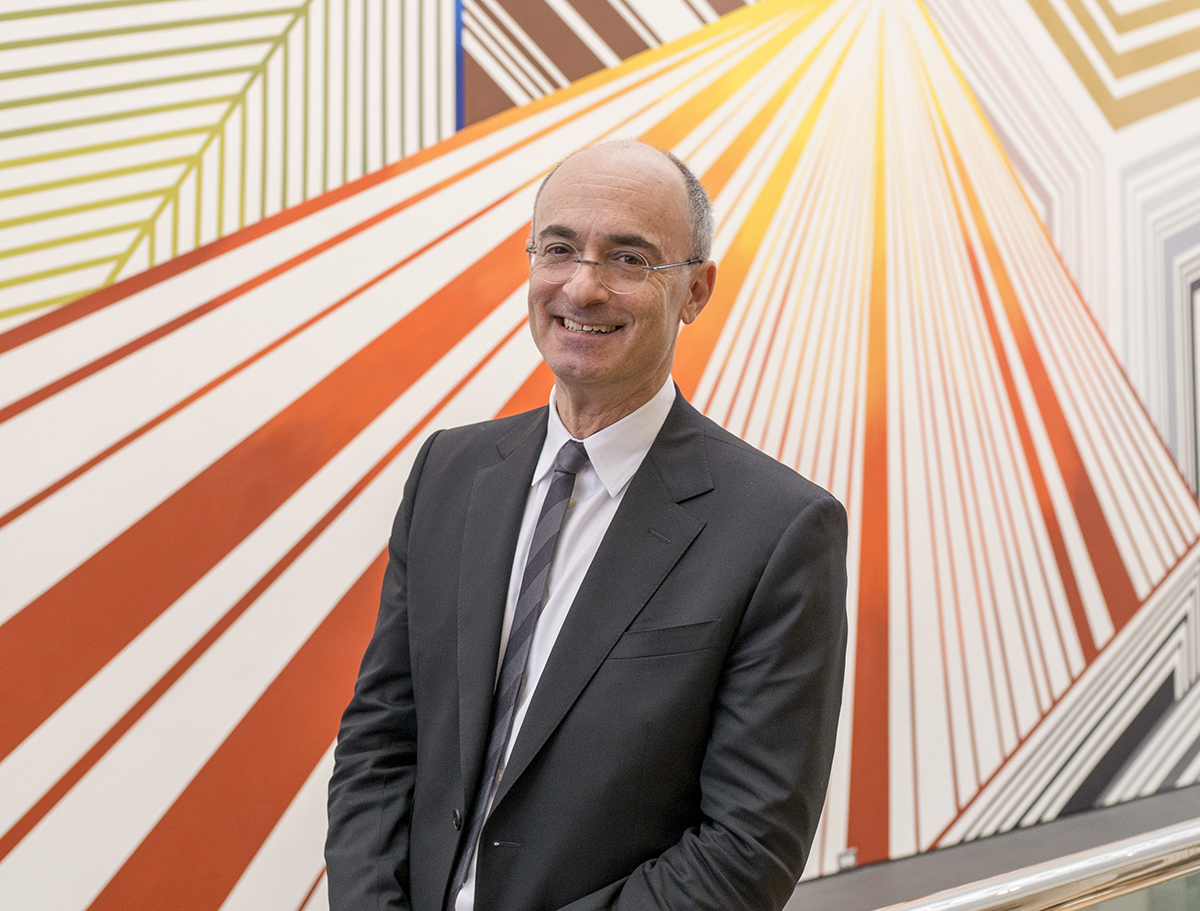Matthew Teitelbaum Talks Plans for the MFA, Returning to Boston

Newly appointed director Matthew Teitelbaum recently visited the MFA. / Photo courtesy of the Museum of Fine Arts, Boston
In 1993, Matthew Teitelbaum, then a curator at the Institute of Contemporary Art, departed for Toronto to become chief curator at the Art Gallery of Ontario—just a year shy of when Malcolm Rogers would begin his 20-year tenure as director of the Museum of Fine Arts. This August, Teitelbaum will return to Boston to succeed Rogers at the MFA, the museum announced in early April, following a nine-month international search.
“Coming back to Boston is happening for me at the right time,” Teitelbaum says. “I’m really very excited about all of the possibilities.”
Teitelbaum is no stranger to Boston—but the cultural landscape of the city he returns to is vastly different than the one he left behind.
The ICA where Teitelbaum curated a number of provocative shows was, at the time, a non-collecting institution with a staff of around 20 people, housed in a small space on Boylston Street—a far reach from its current waterfront facility and burgeoning permanent collection. Within the past few years, the ICA’s peers—the MFA, the Isabella Stewart Gardner Museum, and the Harvard Art Museums—have all unveiled multimillion-dollar renovations and expansions. Additionally, there’s been an increase in public programming and free admission days, spearheaded not only by the museums themselves, but also organizations like Highland Street Foundation, which hosts Free Fun Fridays every year.
“I think it’s a much more robust and connected art community than it was, and there’s a sense of liveliness that was very attractive for me,” says Teitelbaum of his decision to come back to Boston. “There’s something about what I would call sort of this institutional energy and the artistic community energy that was very appealing.”
Teitelbaum himself returns as a changed man—older and much more experienced. He was promoted to director at the Art Gallery of Ontario in 1998, where over the years he would forge partnerships with major international museums, complete a $306 million fundraising campaign, and oversee a large renovation and expansion designed by architect Frank Gehry.
“My own perspective on cities and the roles of institutions has changed considerably in those 20-plus years since I left Boston,” he says. “I come back very much looking forward to the challenge of the MFA and helping it become even more a part of the fabric of the city and a beacon for international connections.”
Teitelbaum inherits a museum with a major focus on public accessibility—made possible by initiatives over the past two decades to restore and reopen its two entrances, extend open hours, eliminate admission fees for children, and host community days—and it’s a part of Rogers’ legacy that he strongly admires.
“The notion that a community, in a sense, creates an institution is an important idea for me. I think that institutions do come alive with their visitors—visitors are the most important,” Teitelbaum says. “The ways in which Malcolm has encouraged the MFA to be seen as, in the broadest and deepest sense, part of the community is something that I hope to build on.”
To get the lay of the land, Teitelbaum plans on spending his early days at the MFA as a visitor himself, exploring its collections and getting to know curators and other staff.
“I think there’s going to be a pretty intense period of asking lots of questions and engaging in very different conversations. Malcolm has created a very welcoming institution in which the visitor feels very much like they belong, and I’ve had wonderful experiences walking through the galleries, even before people knew who I was, and just noticing the way in which I was greeted and helped,” he says. “I’m going to keep walking through the galleries because I need to learn a lot about the collections, and think a lot about how audiences connect with the collections.”
Teitelbaum, although a contemporary art scholar, says there isn’t a gallery in the museum that doesn’t interest him.
“You have to remember that at one time all art was contemporary, and what that means is that at a certain time it was received by an audience and played a certain role in relation to a culture or community. We have to remember that works of art exist both in terms of the moment in which they’re created, and the way in which they’re understood in this present moment,” he says. “I think some of my experience with contemporary art will help enliven the presentation of works of art. I think the goal should be to find ways to connect audiences with art in a way that means something to them and the issues they’re thinking about. That is a contemporary sensibility.”
In addition to starting his work at the MFA, Teitelbaum is eager to reintegrate himself into the city.
“I’m looking forward to going out to walk around Walden Pond if you can still do that—I don’t know if you can… I’m looking forward to going out to the ocean and walking along the beach, which I can’t do that easily in Toronto,” he says. “And I’m looking forward to going to a Red Sox game—as long as they don’t keep beating the Toronto Blue Jays.”


